一年又一年
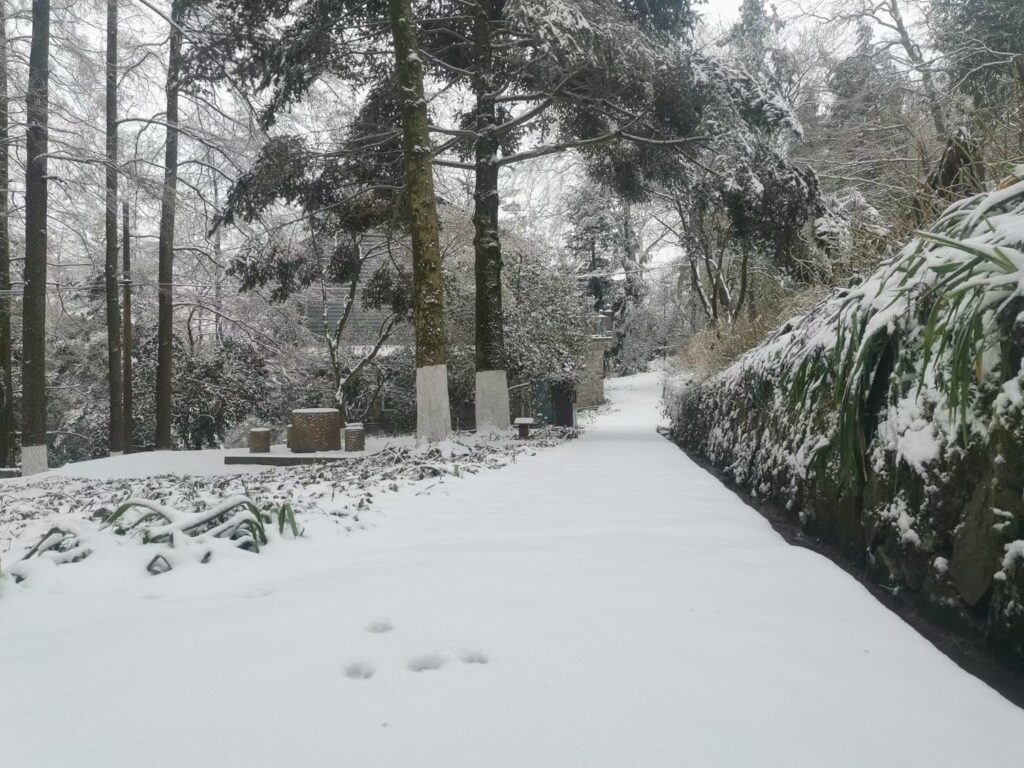
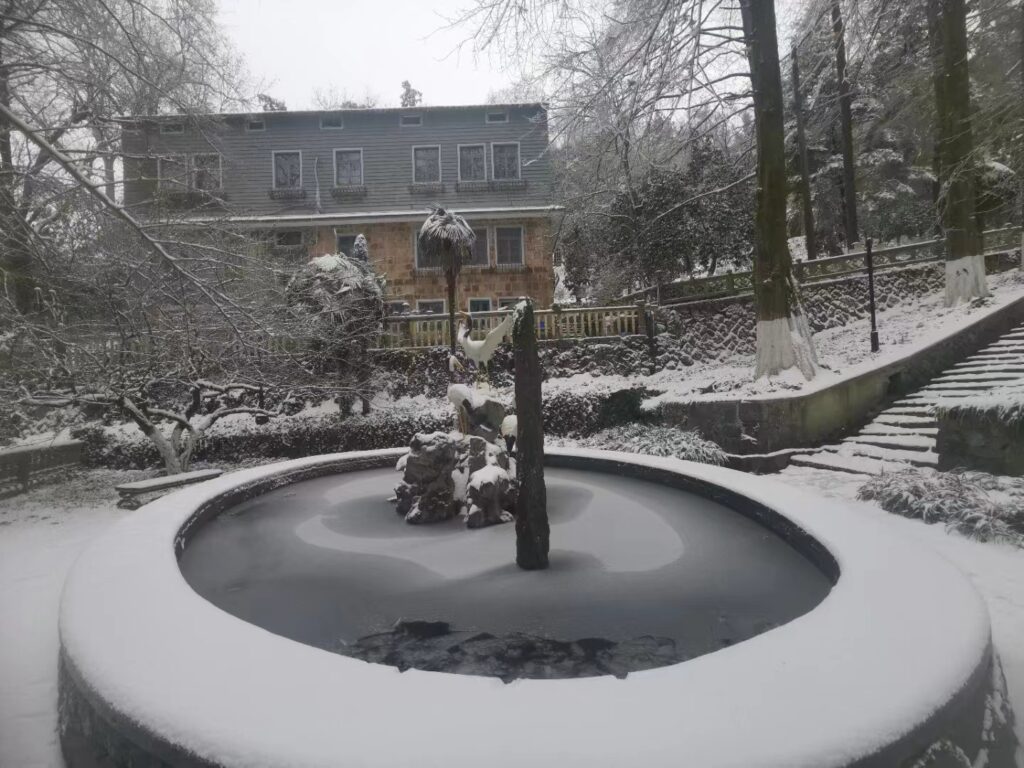
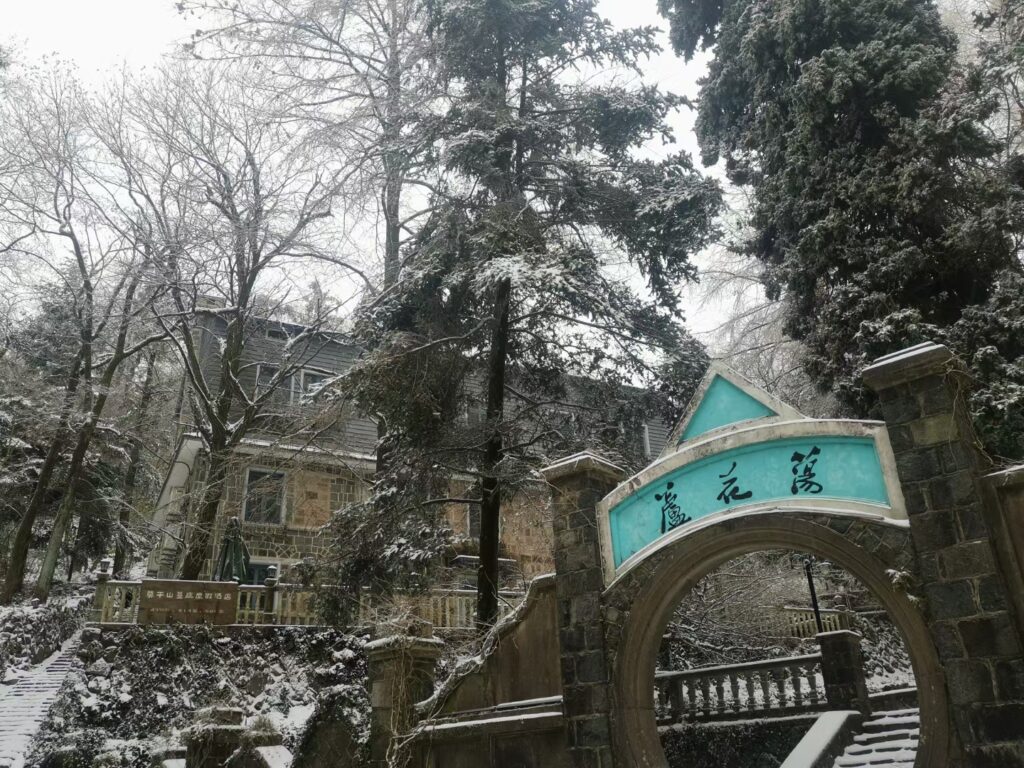
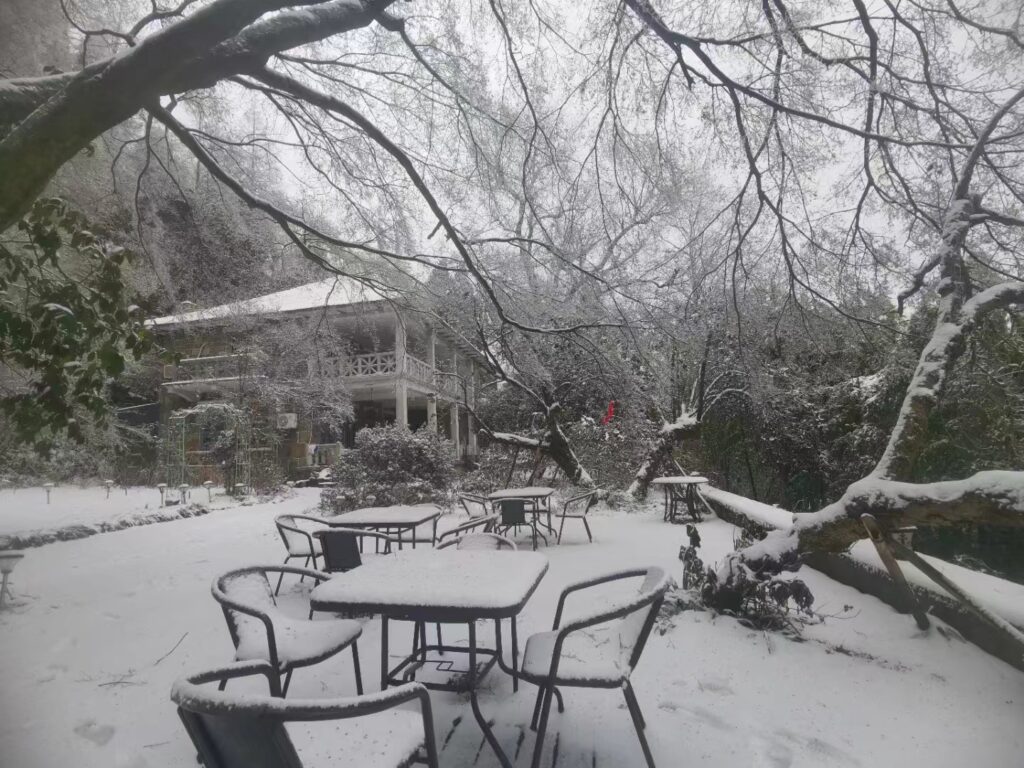
二零二三 冬 于莫干山
Abstract: This article delves into the complex realm of wh-interrogatives in the Taihu Wu dialect, specifically the Tiaoxi subgroup, examining their multifunctional usage beyond traditional interrogative roles. By sifting through extant linguistic studies and utilising data from primarily natural conversations, the research explores the extended functionalities of Wu wh-words in comparison to their counterparts in other languages, such as English and Mandarin. Probing into the Wu dialect’s distinctive syntactic and phonological features, the paper uncovers the dialect’s employment of wh-expressions as negative polarity items, placeholders, and nominalisers within various licensing contexts including negation, questioning, and conditionals. The findings reveal intriguing particularities of Wu wh-interrogatives such as the preference for a certain word order in A-NEG-A questions and the use of classifiers as word-retrieval particles. These insights not only fill a gap in the current understanding of the Wu dialect but also enrich the wider linguistic discussion on the non-interrogative applications of wh-expressions.
Keywords: Wh-interrogatives, Wu dialect “ɦəʔ3zɿ224”, Indefiniteness, Placeholder
1. Introduction
Wh-expressions, in many languages, have been found to be eligible in performing both interrogative and non-interrogative functions. In English, for example, as Traugott (1982) contended, contra Halliday & Hasan (1976)’s “textual-only analysis”, the wh-expressions are sometimes “strongly attitudinal” (p. 255) in meaning. And therefore, the function of them may straddle across propositional, textual and expressive usages. For Sinitic languages, Li (1992) and Cheung (2014) found similar non-interrogative pragmatics of wh-expressions in Chinese Mandarin. And Yap (2023)’s literature review, in which elaborations from various authors on languages or dialects including Cantonese, Chaozhou, Southern Min, Japanese, Tagalog and Korean, etc. (pp. 116-119) demonstrate commensurate functions of each language’s wh-expressions.
While the linguistic academic terrains of the aforementioned languages (and dialects) are replete with in-depth investigations and ongoing mutability, the Chinese dialect Wu has remained much under-studied, presumably due to its lack of a uniform writing system, disparate variants, and declining number of speakers. On this note, this article would engage with the Wu wh-interrogatives and their extended functions, aiming to contribute to the research of Wu under this topic, and thereby tentatively and preliminarily closing the gap between extant investigations of the Wu “wh-interrogatives” and relevant studies in other languages. It is to be presumed that, by analysing pieces of pertinent Wu data sources, this article would provide insights into the Wu wh-expression mechanism, and enable subsequent comparisons between Wu and other languages. More specifically, it is to be discussed, in the remainder of this article, about what are the wh-interrogatives in Wu, and what are some of their fundamental and extended functions.
The remainder of this article would be structured as follows: extant studies on the basics and functions of wh-expressions in other languages will be presented in Section 2; In section 3, I shall introduce and delineate the specific variant of Wu that is to be discussed in this article, as well as bring in the methodology scheme, scilicet, the data sources of this study; following that in Section 4, I will outline the basic interrogative use of Wu wh-words and their corresponding forms in Mandarin and English; furthermore, getting down to empirical analyses, the indefinite Wu [what]’s reliance on specific grammatical contexts for usage will be examined in Section 5. Lastly in Section 6, discussions on the specific functions of Wu wh-words as placeholders in conversation, including word-retrieval and suspense in rhetorical questions will be referred to.
2. Extant Studies
In this section, I will collate and present extant studies on wh-expression’s non-interrogative uses across several languages, namely, basic indefinite uses, placeholder functions, and stance marking functions.
2.1 On the Basic Indefinite use of Wh-Expressions
Progovac (1993) identified English wh-expressions’ presumable propinquity with negative polarity items (“NPIs”) (p. 155). Similarly, and more intuitively, Li (1992), citing Ladusaw (1980) inter alia, proposed that the use of Chinese indefinite wh-expressions, with their connotation of “some” or “any”, typically has to be “licensed” by negative contexts (p. 125). Furthermore, despite the wh-expressions’ affiliation with the negative polarity, it does not follow that they can only be licensed in the scope of negation (Israel, 2011, p. 48), some other conditions, including questions, conditionals, and certain intentional predicates, may also be construed as wh-expression licensors. Therefore, Li (1992) further investigated into the question and conditional licensor in Mandarin Chinese (pp. 128-130), as well as the “non-factive-verb” licensor and its extension of “tentativeness licensor” and “inference licensor” (pp. 129-134).
2.2 On the Placeholder Functions of Wh-Expressions
Beyond the wh-expressions’ basic indefinite pronoun functions, there also exist several more complicated pragmatic uses of them. In English, Enfield (2003) pinpointed the “conspiratorial functions” of the English “what”. And in Mandarin, wh-words often serve as placeholders when the speaker is unable to, for example, recall specific information, or wishes to avoid taboo words, relying on the context to convey the intended meaning to the listener (Cheung, 2014). Similar functions were also found in other Chinese dialects, for instance, Yap & Xu (2022) delved into the extended uses of what-words in Chaozhou, and identified a number of placeholder usages of the Chaozhou “meʔ”, “meʔkai” and “meʔsɯ/meʔhŋ”, including the “taboo-avoidance placeholder”, “word-retrieval placeholder” and “list-extending placeholder” etc. (p. 175). Chor & Lam (2022) also identified commensurate placeholder functions of the Cantonese what— “me1”, namely, “Avoid-Pronouncing-It” (API) functions and “cognitively unretrievable item placeholder” functions (pp. 72-73).
2.3 On the Stance Marker Functions of Wh-Expressions
Due to the article length limitations, this article aims not to engage with the stance marking domain of discussion. However, it has to be mentioned, so as not to arbitrarily limit the scope of Wu wh-expressions within its referential functions, that it is presumable for the Wu wh-expressions to wield various stance marking functions on par with those of other languages (esp. Sinitic languages). The veracity of this presumption requires further investigations into the topic in future research, and I shall briefly present some pertinent extant studies of other languages where the pragmatic use wh-expressions extend from referential to non-referential functions. These include: “what” as evaluative stance markers (Chor & Lam, 2022, inter alia), denouncement markers (Nayaga, 2022) and mirativity markers (Yap & Xu, 2022) or exclamative markers (Badan & Cheng, 2015).
3. Methodology
The primary data source used in this study is “The Data Collection, Recording, and Display Platform for the Chinese Language Resources Protection Project” (https://www.zhongguoyuyan.cn/, based in Beijing Language and Culture University). The data sources on the platform are provided in forms of natural conversation video recordings, audio recordings and recordings of local myths, etc. The specific variation of Wu that is studied in this article is “Taihu Wu Dialect— Tiaoxi Subgroup” (吴语太湖片-苕溪小片, in northern Zhejiang, as delineated by Fu et. al, 1985, subsequently referred to as “Wu”, for convenience). Therefore, data sources from Qianyuan town, Yuehe Street, Wukang town, Zhicheng town, Dipu town and Xiaofeng town were collected, providing a total of more than ten hours of recordings. All following examples are from this platform, unless specified.
The above materials were subsequently selectively transcribed into written forms for analysis where targeted frequencies of wh-expressions appear. The chosen written forms, as well as phonetic transcriptions to IPA, of Wu in this article are based on published Wu dictionaries, academic works on Wu, and local chorographies of targeted counties, municipalities and provinces. These works are: Chorography of Jiangsu Province— Dialect Dictionary (Jiangsu Provincial Local Records Compilation Committee, 1998), Dictionary of Deqing Dialect (Ni, 2014), Chorography of Deqing County (“Chorography of Deqing county” Codification Committee, 1992), Dictionary of Wu Dialect (Wu, 1995), A Study of Wu Characters and Words (Shi, 2018), Dialectology of the Wu Dialect (You, 2018), Contemporary Study of the Wu Dialect (Qian, 1992), Wu Interrogatives in the Ming and Qing Dynasties (Shi, 2020), Research on Modern Wu Language (Zhao, 2011) and Distribution of Zhejiang Wu Dialect (Fu et al., 1985).
4. Wh-Expressions in Taihu Wu Dialect— Tiaoxi Subgroup
In this section, I will introduce some essential background knowledge of Wu wh-expressions, including orthographical considerations, the expressions’ equivalences in Mandarin and English, and their basic interrogative uses.
4.1The Wu Interrogative “What” and its Origin
Having referenced multiple dictionaries and chorographies, the chosen written form of the Wu “what” word is set to be“曷” /ɦəʔ3/ in this article. The character “曷” itself usually cannot be used independently. In most cases, it has to be compounded with a light noun “事” /zɿ224/, meaning “thing” or “matter”, and therefore majorly functioning as an attribute in the compound word “曷事”. This is to say, the Mandarin “什么” (what), “什么事” (what matter), “什么东西” (what thing), all correspond to the Wu “曷事” /ɦəʔ3zɿ224/. Once “曷” and “事” are compounded, the portmanteau would then be eligible for both interrogative pronominal uses and indefinite pronominal uses.
It has to be mentioned, though, that in some cases, “曷” can be compounded with other semantically not-so-generic words to form more specific interrogative or indefinite pronouns. For instance, on the ground that there are no verbatim equivalent pronouns for the English “who” or the Mandarin “谁” in Wu, the Wu “曷” is also often compounded with “尔” (person, /n31/) to serve as the nominal interrogative “who”.
According to Chorography of Jiangsu Province— Dialect Dictionary (1998), in Taihu Wu dialect— Piling subgroup (吴语太湖片-毗陵小片, in southern Jiangsu), the equivalence of the Tiaoxi “曷” is “啥” (what, /sa523/), which could form compound pronouns such as “啥事” (what matter), “啥人” (what person), etc. Presumably, “曷” and “啥” share the same origin of “舍” in Ming and Qing dynasty (Shi, 2020, p. 122), back in the time when “舍” can be used alone as an interrogative pronoun in post-verbal positions, in (1), for instance:
| (1) | 还 | 故子 | 问 | 舍 | 嘴 | 哩。 |
| still | at.here | ask | what | FIL | SFP | |
| “(事情都这么严重了),还在这问什么呢。” “(Things are so serious,) What’s the point of still asking here.” | ||||||
(from《脉望馆钞校本古今杂剧·玉通和尚骂红莲》 [The Monk Yutong’s Scolding of the Red Lotus— Ancient and Modern Miscellaneous Operas], in Ming dynasty, as cited in Shi, 2020, p. 122)
Today, only “啥” can be used alone in as post-verbal pronouns (e.g., “做啥”, meaning “do what”), while “曷” majorly retained its function of an attribute, as mentioned in previous discussions.
4.2 Other Wh-Expressions in Wu
Aside from the “what” word, other wh-expressions in Wu are shown in the table below:
| Wu | Verbatim English Equivalence | English Equivalent | Verbatim Mandarin Equivalence | Mandarin Equivalent |
| 曷尔 | what person | who | 什么人 | 谁 |
| 曷辰光/几时 | what time | when | 什么时候 | 什么时候 |
| 曷里 | what place | where | 什么地方 | 哪里 |
| 曷里个 | what place that (i.e., what thing in that place?) | which | 什么地方的那个 | 哪个 |
| 那介 | how (is) that | how | 怎样这个 | 怎样 |
| 几化 | how much/many | how much/many | 多少 | 多少 |
| 做啥 | do what | why | 干什么 | 为什么 |
Collated from Dictionary of Deqing Dialect (2015), Chorography of Deqing County (1992) and Dictionary of Wu Dialect (1995)
5. Basic Indefinite Pronominal Applications of “What” in Wu
As elaborated in Section 2.1, it was prevalent in other languages that wh-expressions are closely related to negative polarity items (NPIs) and their use often needs to be “licensed” by particular grammatical contexts. Similarly in Wu, the “what” word also needs to be licensed. In the remainder of this section, five licensors in Wu will be demonstrated, namely, the negation, question, conditional, tentativeness, and inference licensor.
5.1 “What” as an Indefinite Pronoun Made Eligible by a Negation Licensor
Similar to other languages, as a negative polarity item, the Wu indefinite “what” is not found within affirmative declarative statements, as exemplified in example (2a). Instead, its occurrence is characteristic of negative constructions, as illustrated in (2b):
| (2a)* | 我 | 吃 | 曷事。 | |
| ŋu31 | tɕhioʔ5 | ɦəʔ3 zɿ224 | ||
| 1SG | eat | what | ||
| “我吃什么。” | ||||
| “I eat something” | ||||
| (2b) | 我 | 覅 | 吃 | 曷事。 |
| ŋu31 | fəʔ5iɔ44 | tɕhioʔ5 | ɦəʔ3 zɿ224 | |
| 1SG | NEG.want | eat | what | |
| “我不想吃什么。” | ||||
| “I don’t wanna eat anything” | ||||
A distinctive feature of the Wu “what” lies in that it usually cannot exercise adnominal functions, as seen in (2c):
| (2c)* | 我 | 覅 | 吃 | 曷事 | 东西。 |
| ŋu31 | fəʔ5iɔ44 | tɕhioʔ5 | ɦəʔ3 zɿ224 | toŋ44ɕi44 | |
| 1SG | NEG.want | eat | what | thing | |
| “我不想吃什么东西。” | |||||
| “I don’t wanna eat anything” | |||||
| (this is not necessarily wrong, but very uncommon) | |||||
Although it is commonly accepted, and indeed widespread, to append (light) nouns subsequent to the Mandarin or English “什么” (what), such as “什么东西” (what thing), this practice is infrequently observed in the Wu dialect, with no instances occurring within 54 documented frequencies. Arguably, this is because the Wu “曷事” is already a “what-light noun” compound, as referred to in Section 4.1, suffixing it with another noun would seem redundant. Thus, it is to be expected that there would be a significantly higher occurrence— possibly exclusively— of the pronominal deployment of the Wu “what” as opposed to its adnominal application.
5.2 “What” as an Indefinite Pronoun Made Eligible by a Question Licensor
As for applications of the Wu “what” within “ma-questions”, Wu exhibits syntactical resemblance with Mandarin, as delineated by Li (1992, p. 218). Specifically, the “what” is permitted to occupy both subject and object positions in sentence constructions, as can be seen in (3a), the object position; and in (3b), the subject position.
| (3a) | 尔 | 要 | 底 | 曷事 | 伐? |
| n31 | ɪɔ44 | ti53 | ɦəʔ3 zɿ224 | vaʔ3 | |
| 2SG | want | some | what | Q | |
| “你要点什么吗?” “You want something?” | |||||
| (3b) | 曷尔 | 来 | 汏浴 | 伐? |
| guə42n31 | lɔ213 | da224ɦioʔ3 | vaʔ3 | |
| what.person | ASP | take.bath | Q | |
| “什么人(谁)在洗澡吗?” | ||||
| “Anyone (who’s) taking a bath (in there)?” | ||||
A distinctive feature of Wu emerges in the syntax of “what” within A-NEG-A questions, where its placement diverges from that of Mandarin, and many other Chinese dialects, incl. Cantonese. Specifically, in Wu, the syntactical sequence is Verb-“what”-NEG-(Verb), while in Mandarin, the typical order is Verb-NEG-Verb-“what”. In both languages, “what” is confined exclusively to the object position, yet the placement of the negation differs. Illustrative examples can be observed in (3c) and (3d) below:
| (3c) | 你 | 喜不喜欢 | 什么?(Mandarin) |
| ni3 | xi3bu4xi3huan1 | shen2me (pinyin) | |
| You | like.NEG.like | what | |
| “Is there anything you like?” | |||
| (3d) | 曷 | 喜欢 | 曷事 | 否是?(Wu) |
| n31 | ɕi53huəɤ44 | ɦəʔ3zɿ224 | vəʔ5zɿ31 | |
| You | like | what | NEG | |
| “你是不是喜欢什么?” | ||||
| “Is there anything you like?” | ||||
A presumable explanation on why it is preferred in Wu to put “曷事” (the “what”) and “否” (the negation) together in a sequence could be explicated on from a phonological perspective, i.e., it is much easier (or cannot be easier) to pronounce the Wu sound of “曷事否” (what-NEG), than the Mandarin “什么不” (what-NEG), or other possible Wu constructions.
Upon articulation of the Wu dialect term “曷事” (what) / ɦəʔ3zɿ224/, the speaker’s articulatory posture is placed at a fricative consonant /z/, followed by an apical vowel pronounced with friction /ɿ/. This sound requires a delicate constriction at the dental ridge, where the tongue approximates the upper front teeth to produce a sustained, turbulent sound inherent to fricatives. Subsequently, the phonetic change to “否” (NEG) /vəʔ5/ entails a transition from this dental fricative to a labiodental fricative. This phonetic shift is relatively subtle and retains articulatory economy, as it capitalises on the tongue’s neutral position subsequent to the /zɿ/ realisation. The lower lip, previously unengaged, is also hereby recruited to ascend to the upper teeth, thereby effectuating the labiodental /v/. This positional change is minimal, thereby reducing articulatory burden. Following the fricative, the articulators smoothly proceed to the subsequent vowel /ə/ and conclude with a glottal stop /ʔ/. This streamlined transition sequence facilitates a coherent and efficient phonological progression. And I shall argue that such a smooth progression ultimately contributed to the fluidity and naturalness with which Wu dialect speakers can produce and gradually prefer this “A-[what-NEG]-A” interrogative structure, rather than other structures.
5.3 “What” as an Indefinite Pronoun Made Eligible by a Conditional Licensor
Similar to the negation licensor case, when the Wu “what” is licensed by a conditional structure (“if”, for example), it retains the flexibility to manifest in either the object position, as demonstrated in example (4a), or the subject position, as illustrated in example (4b):
| (4a) | 要是 | 尔 | 搭 | 伊 | 白相 | 底 | 曷事… |
| iɔ435 zɿ224 | n31 | taʔ5 | ɦi213 | baʔ3ɕiɑ̃435 | ti53 | ɦəʔ3 zɿ224 | |
| If | 2SG | with | 3SG | play | some | what | |
| “要是你跟他玩点什么…” | |||||||
| “If you play something with him…” | |||||||
| (4b) | 明朝 | 个 | 领导 | 要 | 来 | 检查 | 得 | |||
| mən213zɔ213 | kəʔ5 | lən31 dɔ224 | iɔ435 | lɛ213 | tɕie53 zɔ213 | tɛʔ5 | ||||
| Tomorrow | CL | official | will | come | examine | SFP | ||||
| “明天领导就要来检查了” “Tomorrow there will be an official coming to examine” | ||||||||||
| 要是 | 学堂 | 里 | 曷事 | 出 | 点 | 毛病… | ||||
| iɔ435 zɿ224 | ɦoʔ3 dɑ̃213 | li31 | ɦəʔ3 zɿ224 | tsh əʔ5 | tie53 | mɔ213bən224 | ||||
| If | school | LOC | what | go/happen | a.bit | wrong(ness) | ||||
| “要是学校里什么出点问题…” “If something goes wrong in the school…” | ||||||||||
5.4 “What” as an Indefinite Pronoun Made Eligible by Tentativeness and Inference Licensors
As mentioned in Section 2.1, other than the three aforementioned “licensed” circumstances, wh-expressions may also manifest in contexts where the assertive force affirming the veracity of a proposition is diminished (Lü, 1980). Citing Lü, Li (p. 131) subsequently argued that the feasibility of an indefinite wh-expression is attributable to the tentative nature or ambiguity inherent within linguistic contexts (e.g., the use of words like “probably”, etc.).
Furthermore, beyond explicit markers of uncertainty, the diminished force in asserting a proposition’s truth may be conveyed through the use of inference markers (e.g., “le” in Mandarin), which permits the application of an indefinite wh-expression. Inferences, being less immediate than factual commitments, introduce a degree of tentativeness and uncertainty, thus justifying the use of an indefinite Wh-expression.
See below the two examples in Wu, catering for the “uncertainty & tentativeness” (5) and the “inference” (6) case, respectively:
| (5) | 伊 | 好像 | 稍细 | 有 | 点 | 怕 | 曷事 | 个 | 样子。 |
| ɦi213 | hɔ53ʑiɑ̃31 | sɔ44 ɕi44 | iɤ53 | tie53 | ti53 | ɦəʔ3 zɿ224 | kəʔ5 | ɦiɑ̃224tsɿ53 | |
| 2SG | seem | a little | have | bit | scare | what | AUX | appearance | |
| “他好像稍微有点害怕什么的样子” | |||||||||
| “He seems to be a little scared of something.” | |||||||||
| (6) | 尔 | 刻板 | 是 | 搭 | 伊 | 讲 | 曷事 | 得, |
| n31 | khəʔ5pɛ53 | zɿ224 | taʔ5 | ɦi213 | kɑ̃53 | ɦəʔ3zɿ224 | tɛʔ5 | |
| 2SG | must | COP | to | 3SG | say | what | PERF.inference marker | |
| “你肯定是跟他讲什么了,” | ||||||||
| “You must have told him something,” | ||||||||
| 伊 | 才 | 个 | 样。 | |||||
| ɦi213 | zɛ213 | kəʔ5 | ɦiɑ̃224 | |||||
| 3SG | because.of.that | DEM | appearance. | |||||
| “他才这样。” | ||||||||
| “that’s why he looks like this.” | ||||||||
6. Indefinite Wh-Expressions as Placeholders
In this section, two placeholder functions of the Wu “what” that have some unique constructions will be referred to, namely, the word-retrieval placeholder, and the suspense placeholder in rhetorical questions.
6.1 As a Word-retrieval Placeholder
In example (7a) below, the what word “曷个” is used as a word-retrieval placeholder. In this case, the speaker is trying to think of the major entertainment activity in the town of Xitang while introducing the town to others. The “what” in this example replaced a verbal constituent, namely, “taking boats”.
| (7a) | 一般呢 | 主要 | 来个呢 | 是 | 上海 | 过来 | 比较多, |
| iə 5pɛ44nɛ213 | tsɿ53iɔ44 | lɛ213koʔ5nɛ213 | zɿ224 | zɑ̃224hɛ53 | ku435lɛ213 | pi53tɕiɔ435tu44 | |
| Commonly.FIL | mainly | come.FIL | COP | Shanghai | come | relatively.more | |
| “一般主要是上海人过来的比较多,” “Commonly it is the Shanghai people who come here more,” | |||||||
| 过来 | 西塘。 | ||||||
| ku435 lɛ213 | ɕi44 dɑ̃213 | ||||||
| come.to | Xitang | ||||||
| “来到西塘。” “come to Xitang.” | |||||||
| 西塘 | 白相 | 呢 | 就是 | 曷个, | 船 | 乘乘 | |
| ɕi44 dɑ̃213 | baʔ3ɕiɑ̃435 | nɛ213 | ʑiɤ224zi31 | ɦəʔ3kəʔ5 | ʑəɤ213 | ʑən213ʑən213 | |
| Xitang | play | FIL | AUX.COP | what.DEM | boat | RED (take) | |
| “在西塘玩呢,就是那什么,乘乘船。” “To play in Xitang, is, whatchamacallit, to take boats” | |||||||
It is of particular interest to note that, unlike in some other languages (e.g., Mandarin and Cantonese), in Wu, the employment of “what” does not exhibit universality across all instances of lexical retrieval. When a word-retrieval function is needed for replacing a nominal in Wu, it is not feasible to use a wh-expression (as in example 7b). Rather, we would use a “that thing” or “DEM.CL” construction, as seen in example (7c):
| (7b)* | 曷事 | 搭 | 我 | 拿 | 过来, | 好伐? | 只 | 手机。 |
| ɦəʔ3zɿ224 | taʔ5 | ŋu31 | nɔ213 | ku435lɛ213 | hɔ53vaʔ3 | tsəʔ5 | ɕiɤ53tɕi44 | |
| what | for | me | take | to.here | okay.Q | CL | phone | |
| “帮我把那什么拿过来,好吗?那个手机。” | ||||||||
| “Help me get that whatchamacallit, will you? That mobile phone.” | ||||||||
| (7c) | 各只 | 搭 | 我 | 拿 | 过来, | 好伐? | 只 | 手机。 |
| kəʔ5tsaʔ5 | taʔ5 | ŋu31 | nɔ213 | ku435lɛ213 | hɔ53vaʔ3 | tsəʔ5 | ɕiɤ53tɕi44 | |
| DEM.CL | for | me | take | to.here | okay.Q | CL | phone | |
| “帮我把那什么拿过来,好吗?那个手机。” | ||||||||
| “Help me get that whatchamacallit, will you? That mobile phone.” | ||||||||
Presumably, this might be due to the fact that a classifier would indicate that the referent of the expression is a nominal. Even the speaker has momentarily forgotten the exact name of the referent, it should be easy for him/her to recall the classifier that should be used to precede the referenced nominal. On this note, using a DEM.CL construction as a word-retrieval placeholder for nominals would seem plausible.
Furthermore, this construction is syntactically enabled by the phenomena that classifiers in Wu themselves can function as placeholders in word-retrieval contexts, especially in pseudo-clefted sentences like (7c), but this is not feasible in some other languages, as can be seen in a Mandarin example (7d):
| (7d)* | 那部 | 帮 | 我 | 拿 | 过来, | 好吗? | 那 | 部 | 手机。 |
| na4bu4 | bang1 | wo3 | na2 | guo4lai2 | hao3ma | na4 | bu4 | shou2ji1 (pinyin) | |
| DEM.CL | for | me | take | to.here | right.Q | DEM | CL | Phone | |
| “帮我把那什么拿过来,好吗?那个手机。” “Help me get that whatchamacallit, will you? That mobile phone.” | |||||||||
In (7d), the initial “那部” (DEM.CL) cannot be used as an anaphoric word-retrieval placeholder for the latter utterance of “手机” (phone), therefore, it is infeasible to use this DEM.CL construction to form word-retrieval contexts in Mandarin. This could explain why the word retrieval placeholders for both nominals and verbal constituents in languages like Mandarin are just the “what” words, while in Wu, it is DEM.CL for nominals, and “what” words merely for verbal constituents.
6.2.1 As a Placeholder of Suspense
| (8a) | 乾元 | 小镇 | 有 | 个 | 叫 | 曷事 | 呢, |
| dʑie213ɦie213 | ɕiɔ53tsən435 | iɤ53 | kəʔ5 | tɕiɔ435 | ɦəʔ3zɿ224 | nɛ213 | |
| Qianyuan | town | have | CL | call | what | Q | |
| “乾元小镇里有个什么呢,” | |||||||
| “What’s in the town of Qianyuan?” | |||||||
| 叫 | 特色 | 小镇。 | |||||
| tɕiɔ435 | dəʔ3səʔ5 | ɕiɔ53tsən435 | |||||
| call | characteristic | town. | |||||
| “有个叫特色小镇的地方。” | |||||||
| “There’s a place called The Characteristic Town.” | |||||||
In (8a), the usage of “曷事” (what) in the sentence does not strictly follow the interrogative role, instead, it serves as an indefinite suspense placeholder in a rhetorical structure, allowing the speaker to introduce a topic in an informal or conversational way.
In the sentence “乾元小镇有个叫曷事呢” (“What’s in the town of Qianyuan?”), “曷事” (what) acts as a placeholder to create a suspense or a dramatic pause before revealing the name “特色小镇” (The Characteristic Town). This usage reflects a storytelling style, where the speaker is pretending to (therefore the “曷事” here is not a word-retrieval placeholder) search for the term “特色小镇” momentarily before presenting it to the listener.
The Wu dialect manifests its special syntactical structure here: although it is possible for the “what” to function as similar placeholders in other languages like Mandarin, in contrast, standard Mandarin generally avoids having two or more verbs (in example 8a there are de facto three verbs in a row, “有” (have), “叫1” (call-1), “叫2” (call-2), respectively) directly in sequence without any conjunctions, as it may lead to structural ambiguity. Therefore, in Mandarin, a speaker would typically rephrase the sentence to avoid having “有” (have) and “叫” (call) together without conjunctions or other structural markers, so as to clearly separate the clauses. For example, to make the sentence in example (8a) acceptable in Mandarin, it might be restructured as:
| (8b) | 乾元 | 小镇 | 里 | 有 | 个 | 什么 | 呢,(Mandarin) |
| qian2yuan2 | xiao3zhen4 | li3 | you3 | ge4 | shen2me | ne (pinyin) | |
| Qianyuan | town | LOC | have | CL | what | Q | |
| “乾元小镇里有个什么呢,” | |||||||
| “What’s in the town of Qianyuan?” | |||||||
| 有 | 个 | 叫 | 特色 | 小镇 | 的 | 地方。 | |
| you3 | ge4 | jiao4 | te4se4 | xiao3zhen4 | de1 | di4fang1 | |
| have | CL.one | call | characteristic | town | AUX | place. | |
| “有个叫特色小镇的地方。” | |||||||
| “There’s a place called The Characteristic Town.” | |||||||
As an adapted version to fit in mandarin grammar, a locative “里” (in) is added in (8b), it helps to break up a sentence into clear, grammatical components that define where actions or states are taking place. Mandarin syntax often relies on such particles to delineate different parts of a sentence, enhancing the sentence’s overall flow and making it sound more natural to native speakers.
6.2.2 “What” as a Nominaliser in its Suspension Placeholder Function in Rhetorical Questions
Having known preceding explications on the suspense placeholder function of “what” in both Wu and Mandarin, I shall go further to explain how the Wu dialect enables a seemingly syntactically ambiguous “consecutive-use-of-verbs” structure in (8a). On this note, it is plausible to interpret the “曷事” (what) in Wu as a nominaliser within the given example, I would contend that the “曷事” helps to form a nominal phrase, indicating the concept of an unnamed or unspecified entity.
In this explanation, the Wu “叫曷事” (call what) could be seen as creating the nominal concept of “the thing which is named”, turning a question structure into a placeholder for an actual name that is to be provided. Here’s a breakdown of this interpretation:
“有个” (have CL), meaning “there is” or “has a”;
“叫曷事” (call what) would nominally represent “the thing which is to be named” or “the name that is to be given”, serving as a stand-in noun phrase until the actual name is disclosed;
“呢” (Q) can either be explained as an interrogative in a rhetorical question, or a modal particle that does not have a direct English equivalent but is often used to indicate a pause for thought, similar to “well” or “let's see”.
Therefore, under this interpretation, the sentence structure could be seen as:
“乾元小镇有个” (Qianyuan town has a ...);
Followed by the nominalised phrase “叫曷事呢” (a thing to be named);
Concluded by “叫特色小镇。” (called The Characteristic Town).
And together as “Qianyuan town has a thing to be named called The Characteristic Town.”
In this light, it could be argued that “什么” wields a nominalising function by holding the place for the name that is about to be mentioned, thus making it grammatically acceptable in the logic of the Wu dialect.
A similar phenomenon is found in Rukai, an Austronesian language spoken in southern Taiwan, for comparison. In Rukai, “all members of the interrogative sets can become arguments via nominalization” (Chen, 2002, p. 384) For example, in (9), the “do what” interrogative is nominalised into “what you did”:
| (9) | a-su | piya | [kay | ta-tua-tuman-ane-su]? (Rukai) |
| why | do | DEM | do.what | |
| “Why does this [what you did] (be like this)?” or “Why does what you did turn out to be this way?” | ||||
| paya-nga-ku! | ||||
| try.one’s.best | ||||
| “I have tried my best!” (adapted from Chen, 2002, p. 384) | ||||
But in Rukai, such nominalisations are case-marked. In (9), the original form of [do.what] is w-a-tumane, and it is case marked into ta-tua-tuman-ane-su (Chen, p. 370) when being nominalised. In the example of Wu, there are no such case markings.
7. Conclusion
In conclusion, the Taihu Wu dialect’s wh-interrogatives (eps. “曷事”, what) display a range of non-interrogative functions that echo the extended uses found in other languages, while also presenting unique features that distinguish them within Sinitic linguistics. The comprehensive analysis of the Tiaoxi subgroup of Wu provided in the article shows that Wu wh-words, like their counterparts in other languages, perform basic indefinite, placeholder, and potential stance marking functions. However, the Wu dialect exhibits distinctive behaviours or constructions in several respects.
For instance, the Wu “what” has a close relationship with negative polarity contexts and is rarely appended with additional nouns, perhaps due to its compound nature as a “what-light noun” construction. In question licensing, Wu wh-words can occupy both subject and object positions. A notable difference lies in the structure of A-NEG-A questions, where Wu favours a Verb-“what”-NEG-(Verb) sequence, contrasting with Mandarin (inter alia)’s Verb-NEG-Verb-”what” order, likely due to phonological economy.
Additionally, the Wu dialect’s use of “what” in word-retrieval contexts differs from other languages, employing DEM.CL constructions as placeholders for nominals and restricting the use of “what” primarily for verbal constituents.
Suspense placeholders in the Wu dialect also exhibit distinctive behaviours, namely, using “what” in rhetorical questions to create dramatic pauses and introduce topics informally. The Wu “what” can act as a nominaliser in such contexts, turning question structures into placeholders for names or concepts that follow. The unique syntactical structure of Wu allows for consecutive verbs without conjunctions, which would be avoided in Mandarin for clarity.
These unique pragmatic, syntactical and phonological characteristics of Wu wh-interrogatives not only contribute to the understanding of Wu dialectology but also provide a ground for comparative linguistic studies. The findings in this article highlight the complex interplay between language-specific features and broader cross-linguistic patterns, demonstrating the Wu dialect’s rich linguistic tapestry and its place within the wider scope of wh-expression research.
References:
Badan, L., & Cheng, L. L. (2015). Exclamatives in mandarin Chinese. Journal of East Asian Linguistics, 24(4), 383–413. https://doi.org/10.1007/s10831-015-9136-z
Beijing Language and Culture University (Director). (2020). The data collection, recording, and display platform for the Chinese language resources protection project. Retrieved December 6, 2023, from https://www.zhongguoyuyan.cn/
Chen, C. (2002). Nominalization of interrogatives in Kucapungan Rukai. Language and Linguistics, 3(2), 369–392. http://www.ling.sinica.edu.tw/files/publication/j2002_2_09_6972.pdf
Cheung, L. Y. (2014). Uttering the unutterable with wh-placeholders. Journal of East Asian Linguistics, 24(3), 271–308. https://doi.org/10.1007/s10831-014-9130-x
Chor, W., & Lam, M. (2023). “It can do me1 (‘what’)?” — On the development of a Cantonese interrogative pronoun into a negative stance marker. Journal of Pragmatics, 203, 68–78. https://doi.org/10.1016/j.pragma.2022.11.011
“Chorography of Deqing county” Codification Committee. (1992). Deqing xianzhi [Chorography of Deqing county]. Zhejiang renmin chubanshe.
Enfield, N. J. (2003). The definition of what-d’you-call-it: semantics and pragmatics of recognitional deixis. Journal of Pragmatics, 35(1), 101–117. https://doi.org/10.1016/s0378-2166(02)00066-8
Fu, G., Fang, S., Cai, Y., Bao, S., & Fu, Z. (1985). Zhejiang Wuyu fenqu [Distribution of zhejiang Wu dialect]. Annual Journal of Linguistics, Linguistic Society of Zhejiang Province, 3.
Halliday, M. a. K., & Hasan, R. (1976). Cohesion in English. Longman Publishing Group.
Israel, M. (2011). The grammar of polarity: Pragmatics, Sensitivity, and the Logic of Scales. Cambridge University Press.
Jiangsu Provincial Local Records Compilation Committee. (1998). Jiangsu shengzhi - fangyanzhi [Chorography of Jiangsu province - dialect dictionary]. Nanjing University press.
Ladusaw, A. William (1980). Polarity sensitivity as inherent scope relations. Indiana University Linguistics Club.
Li, P. (1992). Indefinite Wh in mandarin Chinese. Journal of East Asian Linguistics, 1(2), 125–155. https://doi.org/10.1007/bf00130234
Lü, S. (1980). Xiandai hanyu babai ci [Eight Hundred Expressions in Modern Mandarin] Shangwu publishers, Hong Kong.
Nagaya, N. (2022). Beyond questions: Non-interrogative uses of ano ‘what’ in Tagalog. Journal of Pragmatics, 190, 91–109. https://doi.org/10.1016/j.pragma.2022.01.007
Ni, Y. (2014). Deqing fangyan cidian [Dictionary of Deqing dialect]. Zhongguo huaqiao chubanshe.
Progovac, L. (1993). Negative polarity: Entailment and binding. Linguistics and Philosophy, 16(2), 149–180. https://doi.org/10.1007/bf00985178
Qian, N. (1992). Dangdai Wuyu yanjiu [Contemporary study of the Wu dialect]. Shanghai educational publishing house.
Shi, R. (2017). Wuyu zi he ci de yanjiu [A study of Wu characters and words]. Shanghai educational publishing house.
Shi, R. (2020). Mingqing shidai Wuyu de yiwenci he yiwenju [Interrogative Pronouns and Wh-sentences in Wu Dialect of Ming-Qing Dynasties]. Kumamoto Gakuen University, Studies in foreign affairs, 47, 119–139. https://iss.ndl.go.jp/books/R000000004-I030321376-00?ar=4e1f&locale=en.
Traugott, E. C. (1982). From propositional to textual and expressive meanings: some semantic-pragmatic aspects of grammaticalization. In W. P. Lehmann & Y. Malkiel (Eds.), Perspectives on historical linguistics (pp. 245–271). John Benjamins Publishing.
Wu, L., Luo, W., Wang, J., Huang, X., & Hu, H. (Eds.). (1995). Wu fangyan cidian [A dictionary of the Wu dialect] (1st ed.). Hanyu dacidian chubanshe.
Yap, F. H., & Xu, H. (2022). Indefiniteness, interrogativity, and speaker stance: Insights from the extended uses of ‘what’-words in Chaozhou. Journal of Pragmatics, 200, 158–179. https://doi.org/10.1016/j.pragma.2022.03.018
Yap, F. H., Kashyap, A. K., & Tao, H. (2023). Interrogatives and speaker stance: From information-seeking to interpersonal (dis)affiliation. Journal of Pragmatics, 205, 111–121. https://doi.org/10.1016/j.pragma.2022.12.012
You, R. (2018). Wuyu fangyanxue [Dialectology of the Wu dialect]. Shanghai educational publishing house.
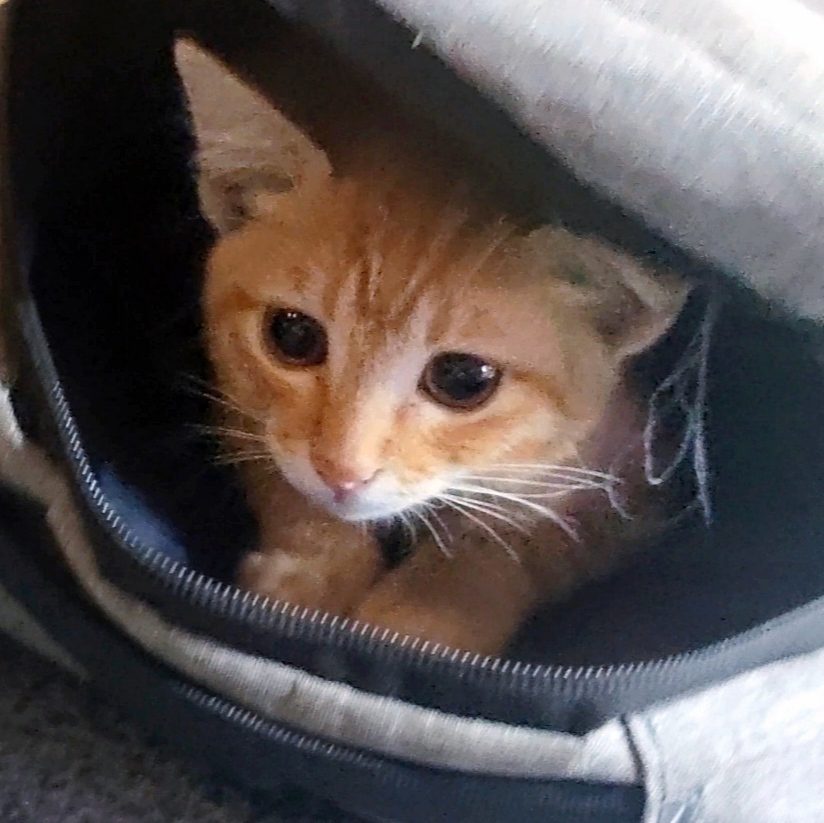








Comments | NOTHING